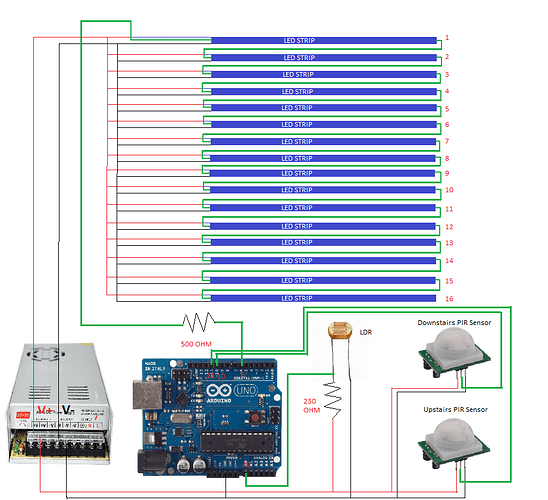Hi Yamiprem,
For the moment I'll talk about charge. It's exactly the same as electrons but it's got the opposite sign convention, i.e. it goes from positive to negative.
Yes, charge can travel across ground as you put it. The ground line is a conductor, same as any wire. The way you pose the question makes it sound like that's a problem - but it's not.
That's because (in most circuits) ground is the lowest voltage there is. Charge won't be able to trickle back up through other devices because that's going up a voltage.
I love an analogy so think of it like this. You have a mountain range with peaks of lots of different heights (different devices at different voltages). Each mountain has a river going from the top to the bottom (current). At the bottom you have a lake that all the rivers drain into (common ground). Each mountain has a pump which takes the water from the lake back to the top of the mountain (voltage sources).
The question you asked was equivalent, in this analogy, to asking if the water can flow down one river and then back up another. Not really! Random stochastic motion might mean that a molecule of water here or there makes it some way upstream, same as electrons exhibiting essentially random motion, but, on average, no.
Why do you need a common ground? Well there's a pinned post at the top of the forum explaining why. I mean, it's not absolutely essential in some projects and in some cases desirable not to but you need to make sure there's no electrical interdependency in those cases. An example might be when one circuit operates a relay which switches another, much higher-voltage, circuit. But there's a complete air-gap here so it's OK - it's the nature of relays.
You need a common ground in most circuits for two main reasons.
First, when you're switching with semiconductors, i.e. transistors and the like, you need to make sure that when you think you put the activation voltage onto the gate the transistor has the same point of reference as to what zero volts is. Voltage isn't absolute - it's just higher or lower than the voltage at another point in the circuit. If you tried switching a transistor without a common ground, then it may switch off or on at unexpected times. Two separate grounds are not necessarily at the same voltage.
Second, it plays havoc with the flow of charge. If you had that circuit where you're trying to switch a transistor, say you're trying to amplify a signal, and the only link between your power circuit and your controller circuit was the single line to the transistor's gate, then you're basically trying to send charge on a one-way trip from your controller circuit to your power circuit. And that's not sustainable. It'll just stop working really quickly.
Like I say, if you have no electrical connection between two circuits they don't need a common ground. An MCU controlling a relay doesn't need common ground with the circuit it's switching. A radio controller doesn't need a common ground with the model car it's controlling. My mobile phone doesn't need a common ground with my laptop.
But say I'm trying to transfer data from phone to laptop by a USB cable - there's a ground-to-ground line in there that is necessary. It's not just to allow you to charge the phone. It means that both the phone and the laptop have a common understanding of just how much energy per electron is a '1' and how much energy per electron is a '0'. In this case think of it like going bowling. Every time you bowl a 1 from your Tx to another device's Rx, you need to get a bit of charge back because electrons are flowing. The ground line is the ball return chute! OK maybe that's an analogy too far...
